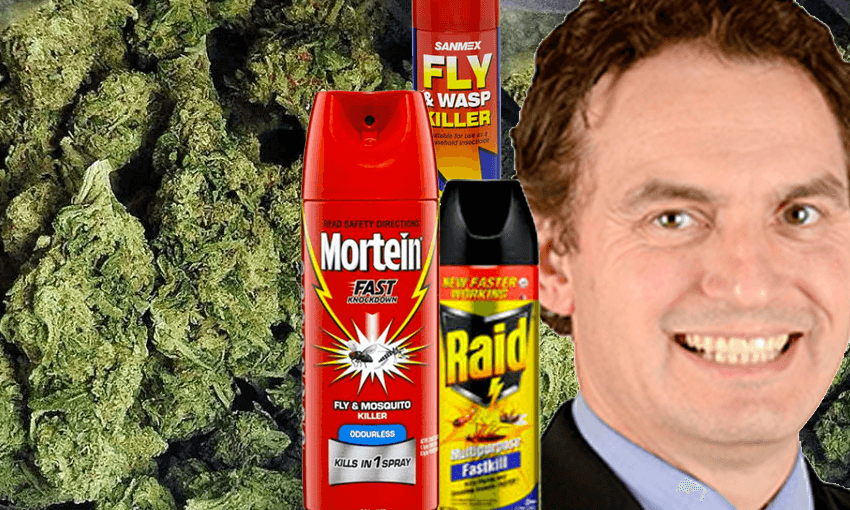Stuart Nash says it was just ‘a metaphor’, but that’s not good enough: for too long the drug debate has been blighted by wild and counterproductive hyperbole, writes Don Rowe
Police Minister Stuart Nash’s comments that synthetic cannabis users are smoking “fly spray and grass clippings” are a continuation of a myth that fuels dangerous misinformation about the synthetic cannabis problem in New Zealand.
This afternoon Nash told The Spinoff he was just “using a metaphor”, but that metaphor has been reported as fact in news stories, columns and broadcasts for more than a year.
In July 2017, as the first wave of synthetic cannabis deaths hit New Zealand, Avondale Police area prevention manager Acting Inspector Marcia Murray was quoted in the Herald as saying police tests of synthetic cannabis “show things like fly spray and weed killer”. Police later said Inspector Murray had been misquoted.
Testing by the crown ESR lab never found the supposed contaminants, and the deaths in 2017 were widely believed to have been attributable to the potency of synthetic cannabinoid AMB-FUBINACA. Not for the first time, the Police and ESR accounts have diverged.
ESR scientist Kevan Walsh told a major Stuff investigation last year the presence of fly spray and rat poison and other lethal contaminants was an “urban myth”, noting that although some insecticides had been detected, they were not in sufficient doses to be fatal.
Which further begs the question, what is the lethal dose of fly spray anyway? I don’t know, but I doubt Police do either. Nash concedes that whatever it is, it’s not responsible for the 40-45 deaths we’ve seen in the previous year.
“Grass clippings and fly spray aren’t killing people,” he said. “But my point is that we just don’t know what’s in this stuff.”
We don’t, not entirely, and nor are we certain of how it arrives in the country.
In a Radio New Zealand story last week, Dr Paul Quigley was paraphrased as saying these drugs were made with “discarded chemicals” and “thrown out ingredients”. His comments are not directly quoted, and the Spinoff has been unable to reach him for clarification, but this appears at best a vast oversimplification of the way synthetic cannabinoids enter the market, and at worst conjures image of drug peddlers rifling through trash bins full of lethal substances.
In a chaotic and developing situation, adding confusion in the name of emphasis is not in the interests of public health, and nor is reporting it unquestioningly.
Instead of “metaphor” and melodrama we need facts. The whole field is littered with hyperbole, which is precisely what makes people overly cynical and no longer receptive to harm reduction messaging.
When you tell a generation that MDMA is eating a hole in their brain and that turns out to be bullshit, they’re not interested in whatever legitimately harmful properties you might talk about. Doseage – a key factor in the lethality of these drugs – barely gets a mention.
As Ross Bell of the Drug Foundation told the Spinoff this afternoon, “the chemicals are dangerous enough, the production is dodgy enough that the extra spin is not warranted”.
What is beyond doubt is that at least 40 people are dead. In a situation crowded with hysteria and myth-making, that bitter truth should require no embellishment, and efforts to tackle this public health crisis should be firmly grounded in facts.
The Bulletin is The Spinoff’s acclaimed, free daily curated digest of all the most important stories from around New Zealand delivered directly to your inbox each morning.
